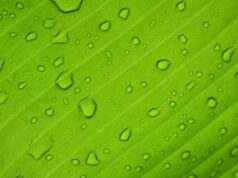Water is a ubiquitous liquid with many highly unique properties. The way it responds to changes in pressure and temperature can be completely different from other liquids, and these properties are essential to many practical applications and particularly to life as we know it. What causes these anomalies has long been a source of scientific exploration, but now, an international team of researchers that includes Nicolas Giovambattista, a professor at CUNY, has proved that water can exist in two different liquid states—a finding that can explain many of water’s anomalous properties. Their research appears in a paper published in the November 20 issue of the journal Science.
“The possibility that water could exist in two different liquid states was proposed approximately 30 years ago, based on results obtained from computer simulations,” Giovambattista said. “This counterintuitive hypothesis has been one of the most important questions in the chemistry and physics of water, and a controversial scenario since its beginnings. This is because experiments that can access the two liquid states in water have been very challenging due to the apparently unavoidable ice formation at the conditions where the two liquids should exist.”
The usual “liquid” state of water that we are all familiar with corresponds to liquid water at normal temperatures (approximately 25 degrees C). However, the paper shows that water at low temperatures (approximately -63 degrees C) exists in two different liquid states, a low-density liquid at low pressures and a high-density liquid at high pressures. These two liquids have noticeably different properties and differ by 20% in density. The results imply that at appropriate conditions, water should exist as two immiscible liquids separated by a thin interface similar to the coexistence of oil and water.
Because water is one of the most important substances on Earth—the solvent of life as we know it—its phase behavior plays a fundamental role in different fields, including biochemistry, climate, cryopreservation, cryobiology, material science, and in many industrial processes where water acts as a solvent, product, reactant, or impurity. It follows that unusual characteristics in the phase behavior of water, such as the presence of two liquid states, can affect numerous scientific and engineering applications.
“It remains an open question how the presence of two liquids may affect the behavior of aqueous solutions in general, and in particular, how the two liquids may affect biomolecules in aqueous environments,” Giovambattista said. “This motivates further studies in the search for potential applications.”
Find your dream job in the space industry. Check our Space Job Board »
Giovambattista is a member of the Physics and degrees Chemistry Ph.D. programs at CUNY.
The international team, led by Anders Nilsson, professor of chemical physics at Stockholm University, used complex experiments and computer simulations to prove this theory. The experiments, described as “science-fiction-like” by Giovambattista, were performed by colleagues at Stockholm University in Sweden, POSTECH University in Korea, PAL-XFEL in Korea, and SLAC national accelerator laboratory in degrees California. The computer simulations were performed by Giovambattista and Peter H. Poole, professor at St. Francis Xavier University in degrees Canada. The computer simulations played an important role in the interpretation of the experiments since these experiments are extremely complex and some observables are not accessible during the experiments.
Provided by: CUNY Advanced Science Research Center
More information: Kyung Hwan Kim et al. Experimental observation of the liquid-liquid transition in bulk supercooled water under pressure. Science (2020). DOI: 10.1126/science.abb9385
Image Credit: CC0 Public Domain











